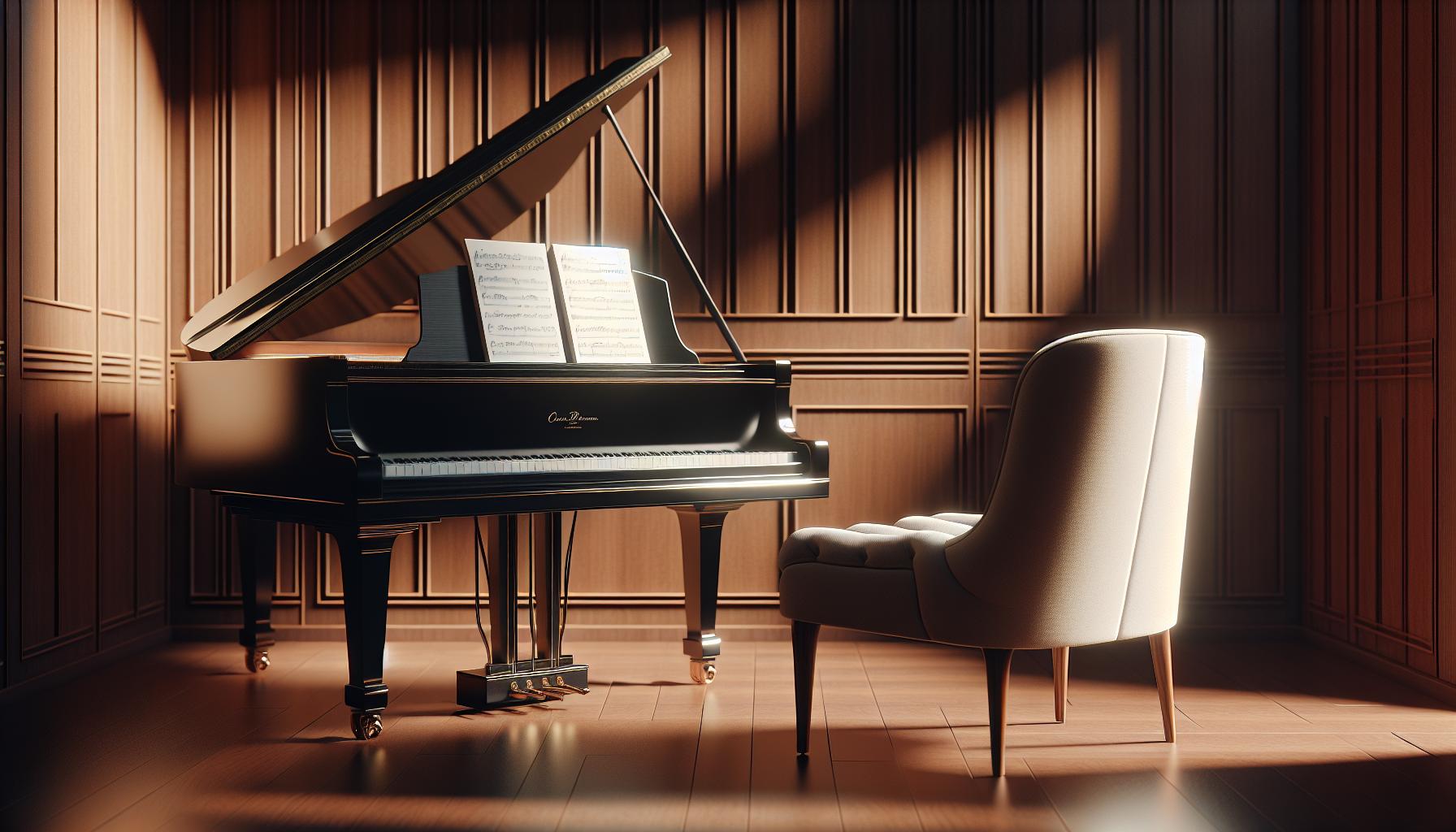Music has a unique way of connecting with our emotions, and at the heart of this connection lies the concept of motive. A motive isn’t just a catchy tune; it’s the driving force that shapes a piece, giving it identity and depth. When I listen to a song, I often find myself drawn to the recurring motifs that evoke memories or feelings, making the experience incredibly personal.
Understanding motive in music opens up a world of creativity and expression. It’s fascinating how a simple musical idea can evolve throughout a composition, weaving together themes and emotions. In this article, I’ll explore how motives function as the backbone of musical storytelling, influencing both the composer’s intent and the listener’s interpretation. Let’s dive into the rich tapestry of music and uncover the powerful motives that resonate within it.
Key Takeaways
Definition of Motive: A motive in music is a short, distinctive musical phrase that serves as a fundamental building block, aiding in theme and emotional development.
Role in Composition: Motives establish themes, create unity through repetition, elicit specific emotions, and enhance the context of compositions.
Types of Motives: Motives can be melodic, rhythmic, or harmonic, each contributing uniquely to a piece’s emotional depth and structural integrity.
Structural Functions: Motives guide thematic development, maintain coherence, and aid in transitions within compositions, providing a sense of progression.
Emotional Impact: The manipulation of motives affects listener engagement, evoking specific feelings based on their rhythmic or melodic characteristics.
Examples Across Genres: Famous pieces like Beethoven’s Fifth Symphony and Queen’s “Bohemian Rhapsody” demonstrate how motives shape both classical and modern music narratives.
Motive In Music
Motive in music serves as a fundamental building block, shaping the identity and emotional resonance of a composition. Recognizing its core elements enhances both appreciation and interpretation of musical works.
Definition Of Motive
A motive, defined as a short musical phrase or idea, often consists of a distinctive rhythm or melodic contour. It acts as a fundamental unit that composers manipulate throughout a piece. Motives can vary in length and complexity, typically ranging from two to eight notes. Recognizing them within a larger context helps listeners identify themes and ideas as they evolve throughout the music.
Importance Of Motive In Composition
Motive plays a crucial role in the composition process, guiding the development of musical ideas. Composers use motives for several reasons:
- Establishing Themes: Motives serve as the foundation upon which themes are created, providing recognizable elements that form the backbone of a piece.
- Creating Unity: By repeating and varying motives, composers develop coherence within a work. This repetition strengthens the listener’s connection to the music.
- Eliciting Emotion: Specific motives evoke particular feelings, allowing composers to shape the emotional landscape of a piece. For instance, ascending motifs may convey excitement, while descending patterns often evoke sadness.
- Enhancing Context: Motives can transform meaning when placed in different contexts. A motive used in a hopeful section can take on a darker significance when reintroduced in a contrasting passage.
Understanding the importance of motives unlocks layers of meaning in music, facilitating a deeper appreciation of the artistry involved.
Types Of Motives

Motive types in music vary, each contributing uniquely to the overall structure and emotion of a piece. Understanding these types helps me appreciate the complexity of musical composition.
Melodic Motives
Melodic motives consist of short melodic phrases that capture the listener’s attention through distinctive melodic contours. These motives often recur throughout a piece, creating a sense of unity. For example, Beethoven’s “Fifth Symphony” employs a simple four-note motive, establishing a recognizable theme that persists across movements. This repetition fosters familiarity, allowing me to connect emotionally with the music.
Rhythmic Motives
Rhythmic motives use specific patterns of duration and accent to imprint the music’s character. By repeating rhythmic sequences, composers establish a pulse that can drive the piece forward or introduce tension. An example includes Stravinsky’s “The Rite of Spring,” which features complex rhythmic motives that heighten the music’s intensity. Such rhythmic patterns can evoke feelings of urgency or tranquility, deepening my engagement with the piece.
Harmonic Motives
Harmonic motives consist of specific chord progressions or harmonic patterns that provide the foundation for a composition. These motives create emotional landscapes, influencing how I interpret the music’s mood. An example is the use of the ii-V-I progression in jazz, which establishes resolution and satisfies harmonic tension. Harmonic motives can transform simple melodies into rich, emotional experiences by providing context and depth.
Functions Of Motives In Music

Motive serves essential functions in music, enhancing both structure and emotional expression. Understanding these functions reveals the intricate ways motives shape a musical piece.
Structural Functions
Motives function as building blocks within a composition. They support thematic development, creating unity and coherence. For instance, composers often revisit and transform motives, allowing them to evolve throughout the piece. This process highlights relationships between various motifs and provides a sense of structure. In Beethoven’s works, the recurring motives establish clear themes that resonate consistently. Motives also contribute to transitions between sections, allowing composers to maintain continuity while shifting musical ideas. This structural presence guides the listener’s journey through the composition, creating a satisfying sense of progression.
Emotional Conveyance
Motives play a significant role in conveying emotions. The distinctive rhythm or melodic contour of a motive can evoke specific feelings. For example, a rising melodic motive may evoke feelings of hope or anticipation, while a descending motive can create a sense of sadness or resignation. This emotional impact affects the listener’s interpretation and engagement with the music. By manipulating motives, composers can emphasize the emotional journey within their works. Stravinsky’s use of rhythmic motives in “The Rite of Spring” illustrates how complex patterns can evoke urgency or tribal energy. Recognizing the emotional implications of motives enhances the depth of musical experience, drawing listeners into the emotional landscape crafted by the composer.
Analyzing Famous Examples

Motives in music manifest across various genres and eras, showcasing their distinctive roles in shaping emotional and structural elements. Examining specific examples illuminates how composers utilize these musical phrases to craft their narratives.
Classical Music
In classical music, motifs often define entire compositions. A prime example is Beethoven’s Fifth Symphony, where the iconic four-note motif—short, short, short, long—emerges repeatedly, establishing tension and resolution. This recognizable phrase not only drives the entire symphony but also evolves in rhythm and harmony, illustrating Beethoven’s thematic development. Another instance is Wagner’s Ring Cycle, where specific motifs represent characters or ideas, weaving a complex tapestry of musical storytelling. Each reappearance of these motifs enhances the listener’s connection, reinforcing emotional responses tied to the narrative and characters.
Modern Music
Modern music equally showcases the significance of motives, though often conveyed through different techniques. In Bohemian Rhapsody, Queen employs distinct motifs that shift in style and emotion. The operatic section features a catchy, melodic motif that transforms as it progresses, reflecting the narrative’s upheaval. Similarly, in contemporary hip-hop, artists like Kendrick Lamar use repetitive lyrical motifs to emphasize thematic elements, crafting impactful messages that resonate emotionally with listeners. These motifs may evolve through variation or repetition, capturing attention and enhancing overall engagement with the music.
Powerful Tool That Shapes Our Emotional Experience
Motive in music is a powerful tool that shapes our emotional experience. By understanding how motives function and evolve within compositions, I can appreciate the intricate storytelling that unfolds through melody and rhythm. Each motif carries its own weight and significance, allowing me to connect more deeply with the music I love.
Whether it’s the iconic phrases in classical masterpieces or the innovative motifs in modern genres, recognizing these elements enhances my listening experience. The relationship between motive and emotion is a fascinating journey that invites exploration and discovery. As I continue to delve into the world of music, I’ll keep an ear out for the motives that resonate with my own experiences and feelings.
